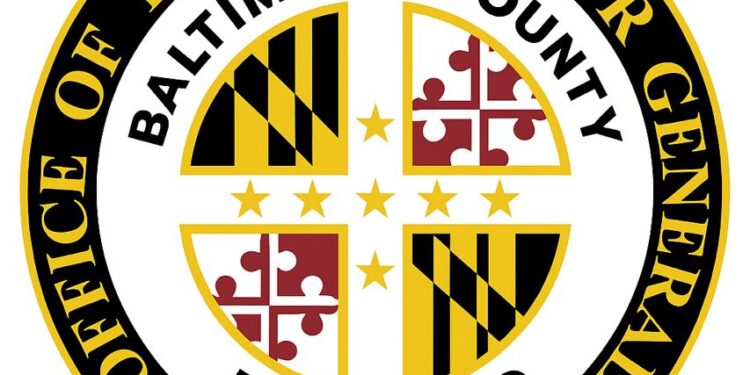Baltimore County has once again found itself at the center of controversy as the Office of the Inspector General revealed that the county wasted more than $125,000 in public funds due to a series of mismanaged and unauthorized traffic projects. The report reads like a reflection of deeper problems, negligence, lack of oversight, and a culture of impunity that continues to thrive in the county’s public service and police-related infrastructure system.
The Inspector General’s Findings
According to the Baltimore County Inspector General’s report, a raised crosswalk meant to be built in front of an elementary school on Compass Road was mistakenly constructed down the street near an already existing speed bump. The report stated, “The error was uncovered after the school inquired about the status of the crosswalk. Subsequently, the Program Manager informed the traffic calming contractor of the mistake, and the contractor installed a second raised crosswalk at the correct location near the elementary school.”
That one mistake alone cost taxpayers thousands of dollars. Even worse, another raised crosswalk was installed in the wrong location, along a state-owned section of Kenwood Avenue in Rosedale, which is not under county jurisdiction. The Inspector General confirmed that the county paid for both the installation and the removal of the unnecessary crosswalk, resulting in waste totaling $27,389.75.

A Conflict of Interest
The report did not stop at simple mistakes. It also uncovered that a former Baltimore County Traffic Engineering and Transportation Planning Division manager authorized the installation of speed humps on a road where they and their family owned property. The report stated, “At a minimum, this resulted in the appearance of a conflict of interest if not an actual conflict of interest.”
This revelation is more than just administrative misconduct, it reflects the depth of corruption and self-interest that continue to plague public offices. The official used their position for personal comfort, turning what should have been a public service into a private favor.
Negligence and Lack of Supervision
The Inspector General’s office noted that there was an alarming “lack of awareness among supervisors in the Program Manager’s chain of command regarding the Program Manager’s decisions on traffic calming matters.” In simpler terms, no one was watching, and no one cared to check. This type of negligence is not new, it has become part of the county’s culture. Public officers make decisions involving taxpayer money with little to no oversight, and mistakes are brushed aside until the media or watchdogs expose them.
The Inspector General’s Complaint
The Inspector General’s office also expressed frustration over being denied full access to records during the investigation. The report stated, “The initial records provided were incomplete and did not include certain projects that were within the requested time period. The Office does not know whether the failure to provide these project files was intentional or a mere oversight.”
This is a damning statement. A government that cannot provide its own records raises serious questions about transparency. Whether it was deliberate or not, it shows a deep-rooted lack of accountability. The Inspector General added that direct access to records should be a standard practice, saying, “The Office needs direct access, when feasible, to any and all County systems and records so that the Office is not relying solely on the agency for document production.”
A Familiar Pattern of Waste
Baltimore County’s repeated errors have become an exhausting cycle for taxpayers. Over $125,000 was wasted on projects that either should not have happened or were done in the wrong places. These are funds that could have repaired roads, supported schools, or improved local policing. Yet, the money vanished into poor decisions and administrative blunders.
The irony is that while ordinary citizens are fined heavily for minor traffic violations, the county itself mismanages traffic funds worth hundreds of thousands without consequence. This hypocrisy is exactly why public trust continues to erode.
The County’s Response
In response to the report, the County promised to implement a new policy manual by the end of the year. The statement said that new responsibilities would be reassigned to ensure “projects are handled with the appropriate expertise.” It also explained that traffic calming requests would now go through stricter checks.
But the truth is that these reassurances are not new. For years, Baltimore County has promised reform, and yet the same stories of waste, corruption, and negligence keep resurfacing. Until there is real accountability, these so-called reforms are only cosmetic.
The Inspector General’s report is more than a story of a misplaced speed bump. It is a mirror reflecting a system that protects itself instead of the public. From missing documents to self-serving officials, it shows how easily taxpayer money can be misused in the absence of strong oversight.
Baltimore County wasted over $125,000 in taxpayer money, but the true cost is much higher, the cost of public trust, the cost of good governance, and the cost of integrity. And unless the county stops treating negligence as a clerical error, it will only continue to pay for corruption with the people’s money

















